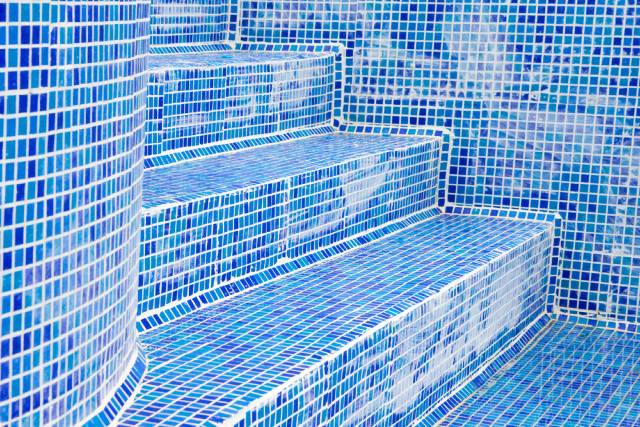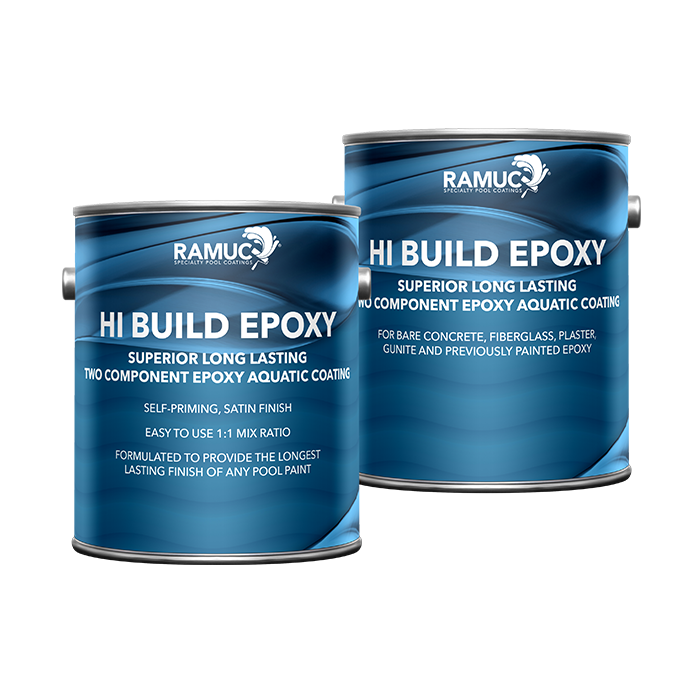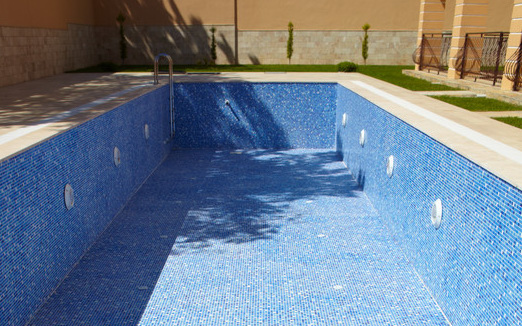No matter how clean your water is, old tiles can make your pool look dirty and unattractive. Even worse, chipped paint can lead to damage that may require you to replace the tiles altogether. The good news is that, depending on your maintenance routine, a proper paint job can keep pool tiles protected from cracks and scratches for at least five years.
But can you properly paint something that will be in contact with water and pool chemicals every single day?
Pool tiles that get wet can be repainted using specialized paint. The type of paint you should use depends on the type of tile you’re working with. Just remember to follow the instructions precisely, or you could end up with bigger pool issues than discolored tiles.
The only thing you need to figure out for yourself is what your tiles are made of. Everything else is covered in our guide. We will go over the different types of paint, discuss which works best for every surface, and walk you through the painting process step by step. Let’s start with an overview of the different materials used to make pool tiles.

Article Contents
Which Pool Tiles Can Be Painted?
Not all tiles are created equal. There are pool tiles that are submersed underwater, partially submersed and then there are the pool tiles on your pool deck. Thankfully, with the right tools, they can all be painted.
In this article, we’re focusing on pool tiles that are fully submersed and those tiles on the waterline.
Pool tiles that are made from porcelain, ceramic, and glass can be painted.
Saying that it’s best to test a small area first. You’ll need to do the proper preparation and then paint a very small area. When the paint is cured, test it to make sure it has adhered properly and you’re happy with the result.
What are the Best Pool Tile Paints?
There are two different types of pool tile paints that are suitable for pool tiles that get wet and pool tiles that stay submerged:
- Water Based Acrylic
- Epoxy
No one likes overpaying, but it’s well worth buying the right paint. Considering the work you will need to put in to drain your pool, and prepare the tiles for painting and the actual painting, paying for quality pool paint now will mean saving even more in the future.
As such, we’ve limited our list of the best pool tile paint options. If used correctly, each of these options will leave your pool looking great for years to come.
Epoxy Paint
Epoxy paint is a two-part paint. The resulting coating makes your tiles impervious to most chemical spills and even to light abrasions. As an added bonus, epoxy paint becomes a smooth and shiny finish.
It contains specialty chemical resin that allows it to stick to various surfaces like concrete, fiberglass, plaster, gunite, previous epoxy paints, and pool tiles.
No matter which specific product you choose, it will come in two separate containers. You’ll need to be fully prepared before unsealing them, then thoroughly mix the two “ingredients” together. One gallon of epoxy paint is enough for about 200 square feet of tile surfaces. Most products are rated to last anywhere from four to nine years.
Aside from its hefty price tag, the most serious downside of epoxy is the long curing time. Though this somewhat varies, most epoxy paints need about a week to fully cure and dry.
- Fills and repairs small cracks as you paint
- The only product that can be used to paint fiberglass
- Results in a smooth hard ceramic-like finish
- Lasts longer than all other pool paints
- More difficult to use than enamel or acrylic paint
- Typically very expensive
- Takes longer to dry than other paints
- Can be slippery (sprinkle sand on steps when drying to minimize)
Here are a few options for epoxy paint:
Hi-Build Epoxy by Ramuc

When I was doing my research, I contacted Ramuc Paint to ask for the best product to paint pool tiles. They recommended Hi Build Epoxy. This particular product will last up to eight years if you apply two coats and adequately prepare the surface.
For this product, you’ll need to sand the tiles with #80 sandpaper before painting. This pool paint is self-priming. It also has a long pot life of 3 hours. This means, you basically have a maximum of 3 hours to apply the product after you mix it.
Super Poxy Shield by In the Swim
- For plaster, gunite, concrete, & fiberglass gel-coat surfaces
- Helps seal small cracks in the pool surface
- Lasts up to 8 years
The Super Poxy Shield is rated to last at least 7-8 years and delivers a fully stain-resistant surface. Unlike the Ramuc product, you’ll still need an epoxy primer, which is sold separately.
Although this is a swimming pool paint, it’s also suitable to be painted onto tiles. I contacted InTheSwim to confirm this.
Here’s what I asked them:
“I wanted to know if I can paint over the existing tiles with it. Will it stick to tiles?”
InTheSwim’s Response:
“Yes, you can paint your tile with it.”
With any paint, I would suggest you do a test patch first to check the color and make sure it sticks well.
Acrylic Paint
There are some very good reasons that acrylic paints are so popular. They are some of the most affordable products on the market, as well as the easiest to apply. In addition to that, they stick to a much wider range of surfaces than epoxy or enamel paints.
The only major drawback of using acrylic paint for pool tiles is that it won’t last longer than a few years. It is also quite translucent in most colors, so you won’t be able to cover any permanent stains.
- Plenty of options, letting you choose between shiny and matte finishes
- Can be applied directly to damp and slightly wet surfaces
- Can be applied on top of other paints
- Fully dries within 2-3 days
- Cheaper than epoxy paint
- Cleans up with water
- Doesn’t fully cover stains
- Only lasts 2-3 years
- It Will not even out bumps or fill hairline cracks
Preparation Needed for Painting Pool Tiles
As with any painting job, there is a considerable amount of preparation that will need to be done before painting pool tiles. In some cases, it may actually be quicker and easier to replace the existing tiles. Not to mention you will have a much longer-lasting and nicer finish.
If you do plan on painting your pool tiles, here’s how you need to prepare them:
- Drain pool below tile level. Or fully drain if your entire pool has tiles.
- Remove and/or repair missing/loose tiles.
- Scrape and remove missing paint, and loose debris.
- Fill missing grout and any cracks or holes with epoxy.
- Sand tiles to rough them up with 60-80 grit paper (don’t skip this or the paint won’t last).
- Clean pool with Tri-Sodium Phosphate (TSP). This removes oils, dirt, and grease.
- Clean the tiles with muriatic acid (acid wash). This will etch and roughen the surface further.
- Rinse the tiles.
- Protect (by taping up) or remove fittings such as lights, jets, or other parts you don’t want paint on.
Pro Tip: When cleaning the tiles, it’s important to get any calcium, dirt, scum, or mineral buildups off the tiles or the paint won’t last. Don’t skip the sanding acid wash or TSP wash either.

Related Reading: 5 Alternatives to Acid Washing Your Pool (Remove Stains)
Do You Need to Prime Pool Tiles Before Painting?
Some epoxy pool tile paints require that the surface is painted with a primer first. It depends on the specific paint.
The epoxy paint by Ramuc does not require priming first. The Super Poxy Shield by InTheSwim does require primer. Check the manufacturer’s instructions for your paint.
What Tools & Materials Are Needed to Paint Pool Tiles
If you’re considering painting your pool tiles, there are some basic tools and supplies you’ll need to do the job properly:
- Sump pump – to drain the pool (don’t use your pool pump)
- Sandpaper – used to rough up tiles
- Muriatic acid – to acid wash and clean the tiles
- Sodium Phosphate (TSP)
- Watering can or sprayer to apply TSP.
- Supplies to repair existing tiles (epoxy glue to fix loose tiles, pool tile grout, replacement tiles)
- Paint Roller and pole (3/8” nap)
- Paint roller tray
- Drop sheets to put paint and tray on
- An assistant to help prep and paint
How Many Coats of Paint Are Needed for Pool Tiles?
How many coats of paint are needed to paint pool tiles depends on the specific paint. Some pool tile paints only need one coat whereas others need two.
The epoxy paint by Ramuc requires two coats for maximum durability. The Super Poxy Shield by InTheSwim only requires one coat. Check the manufacturer’s instructions for your paint.
How Much Does Pool Tile Paint Cost?
Most pool paints suitable for tiles cost between $80 and $150 per gallon. The cost will depend on the manufacturer and the type of paint.
Epoxy paints tend to be in the $110 to $170 per gallon range. They last much longer than other paints. Whereas acrylic paints are cheaper and around $70 to $100 per gallon.
You do get what you pay for so unless you’re happy to do the job again in a couple of years, you’re best off going for the highest quality you can afford.
Related Reading: Limestone VS Travertine For Pool Decks And Coping
Do You Need to Drain the Pool to Paint the Tiles?
Although some of the paints we discussed can be applied to damp or moist surfaces, it’s always best to dry your tiles before painting them. And if you’re using epoxy paint, draining your pool (at least partially) is a must.
Related Reading: How Far Should I Drain Pool for Winter Closing?
Can You Change the Color of Pool Tiles?
Pool tiles can be repainted to a different color. These specialty paints are produced in limited colors though. The most popular colors are because most people want a pool in some combination of white, blue, and teal. There aren’t that many choices around.
Additionally, when changing the color from dark to light, the old color may show through unless you have applied multiple coats of paint.
Related Reading: How to Replace Loose, Cracked, or Broken Pool Tiles



I want to be sure that the Super Poxy Shield by In the Swim is suitable for salted water swimming pool.
Best Regards